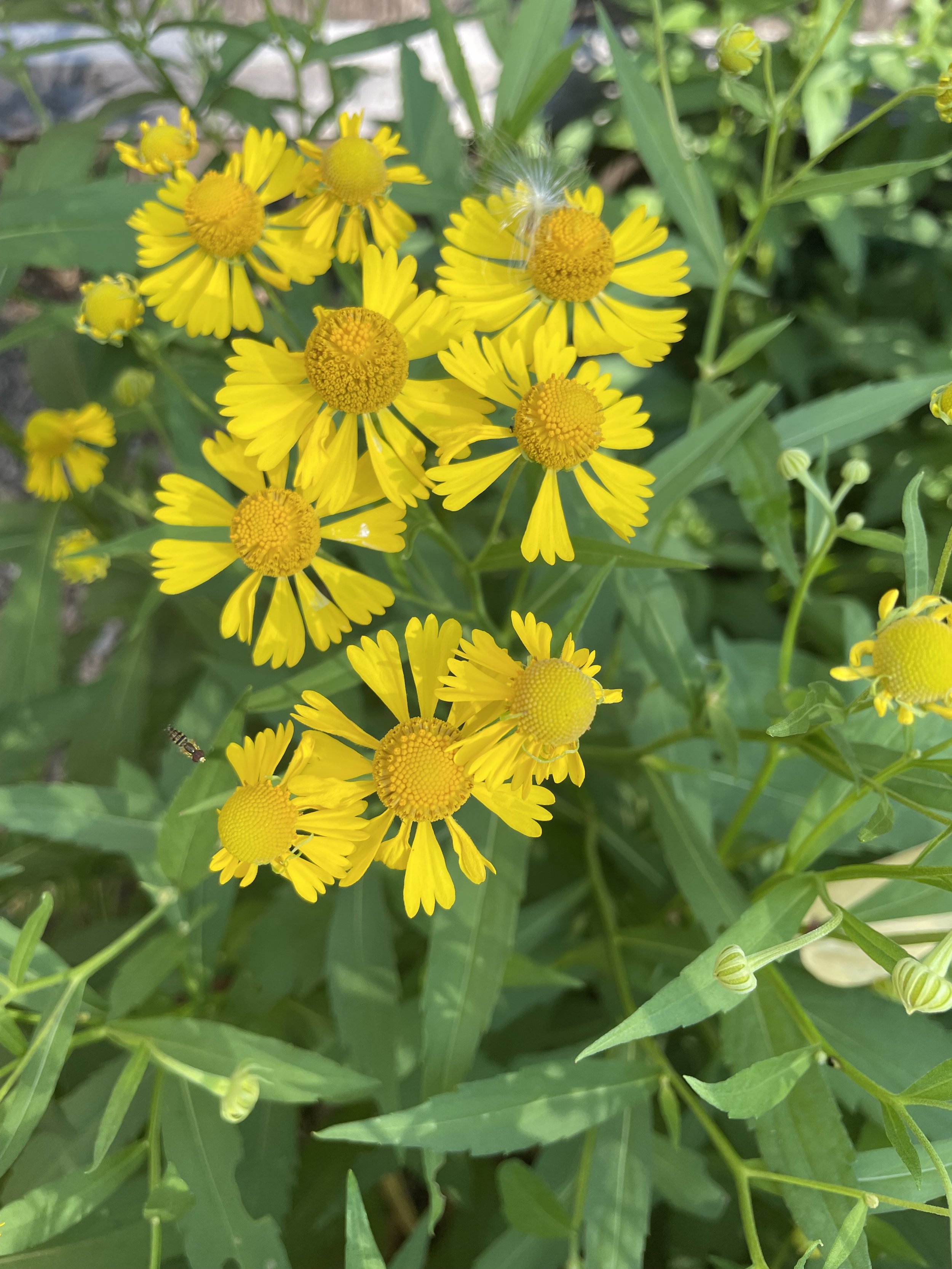Why Pollinator Gardens that Support Biodiversity Matter
Helenium autumnale aka Autumnale Sneezeweed a keystone species, meaning it provides vital sources of food to other species, here in Connecticut.
If you haven’t already nerded out and read everything from Doug Tallamy, acclaimed author and ecologist, here’s a summary of his message.
We’ve got a biodiversity crisis.
As many as 33,000 species of plants and animals in the US are too rare to perform their role in their ecosystem. In other words, they’re functionally extinct.
Songbirds have lost 40% of their numbers. One-third of our nation’s birds are endangered. (Admittedly, I can’t say that I’m a huge fan of birds considering the number of times one has pooped within the vicinity of my head. However, I find this alarming.)
It matters because of the food chain.
Biodiversity runs the ecosystems that support us.
All animals get their energy directly from plants or by eating something that has already eaten a plant. The group of animals most responsible for passing energy from plants to animals that can’t eat plants is insects.
Insects are vital because so many animals depend on them for food (spiders, reptiles, amphibians, rodents, 96% of all terrestrial birds).
As E.O. Wilson explained, insects run the world. Without insect pollinators, 80% of all plants and 90% of all flowering plants would disappear. Same goes for food webs that support mammals, reptiles, amphibians, birds and freshwater fish. There will be no lions, tigers, bears, birds, bats, or bunnies - or humans - in a world without insects.
We can do something about it: ecological gardening!
In our landscapes, we have favored ornamentals from Asia, Europe, and South America over those that evolved here. If all plants supported wildlife equally that would be fine. However, every plant develops defenses to protect itself, making it distasteful or toxic. For the most part, only insects have adapted to eat only the plants with those particular chemicals. In other words, insects from Connecticut are likely unable to eat plants that evolved on another continent. We used to think that “pest free” plants were a good thing, but an insect that cannot eat part of a leaf cannot fulfill its role in the food web.
A Kousa dogwood supports no insect herbivores, whereas a Cornus florida, a flowering dogwood, supports 117 species of moths and butterflies alone.
Non-native ornamentals support 29 times LESS animal diversity than native ornamentals.
Plant for specialists. In the US, we have 4,000 species of native bees. Many of them can only reproduce on the pollen of particular plants.
Keystone species to consider right here in Connecticut:
American Plum Prunus americana (full to partial sun)
Asters, specifically Blue Wood Symphyotrichum cordifolium, Calico Symphyotrichum lateriflorum and New England Asters Symphyotrichum novae-angliae (All work in areas with full to part sun. Great alternative to mums in the fall!)
Black Willow Salix nigra (full to partial sun)
Chokecherry Prunus virginiana (full to partial sun)
Goldenrod, specifically Grass-Leaved Euthamia graminifolia and Old Field Goldenrod Solidago nemoralis (Full sun)
Helenium autumnale aka Autumnale Sneezeweed (Full sun, does not make you sneeze!, a great way to fill in a large area quickly)
Rudbeckia, specifically Black-Eyed Susan Rudbeckia hirta and Cutleaf Coneflower Rudbeckia laciniata (Full sun and full to partial sun, respectively.)
Red and White Oak Quercus rubra (full to partial sun) and alba (full sun)
Homegrown National Park, co-founded by Tallamy, has a list of keystone plants by ecoregion (We’re 8.1 Mixed Wood Plains) here and here.
One last thing, remove species that cause ecological damage from your yard. Download a plant identifier app or use Google and look out for plants that spread unchecked and outcompete species that contribute to biodiversity. These include: autumn olive burning bush, Oriental bittersweet, Japanese honeysuckle, multiflora rose, Norway Maple, tree of heaven, Japanese and Giant knotweed, rose campion, and Japanese and Chinese wisteria. UCONN has a list here.
Am I saying you have to get rid of your lawn? No. Let’s aim for the 80 (80% ecologically beneficial)/20 (20% other) rule.
You can find plants and seeds that promote biodiversity, locally, at NATIVE in Fairfield, Earth Tones in Woodbury, and online at Wild Seed Project of Maine and Prairie Moon Nursery of Minnesota.

